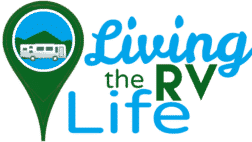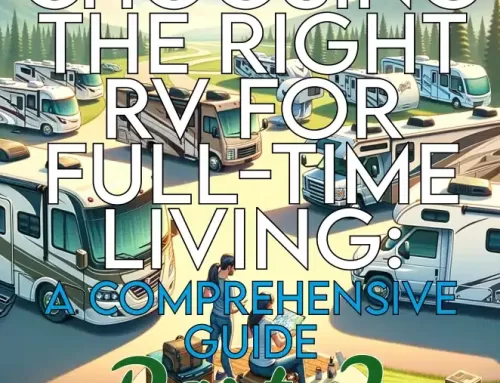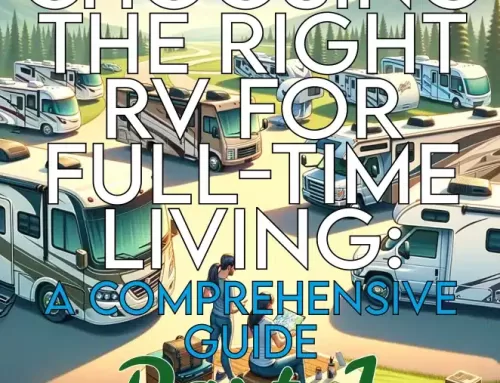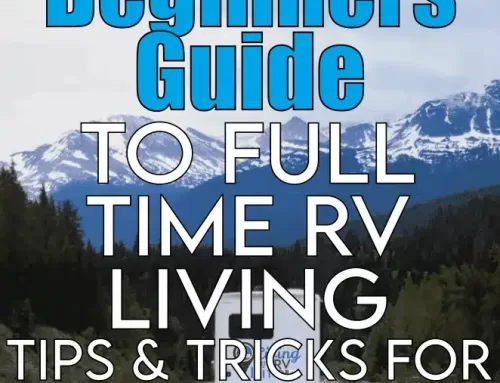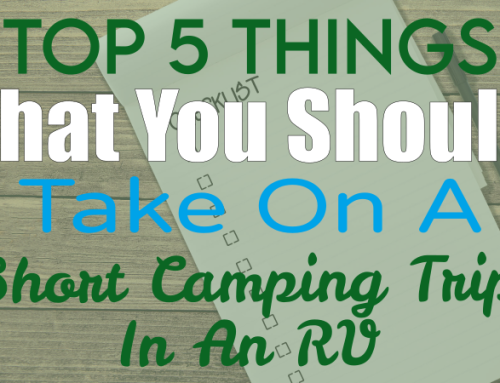Introduction to Full-Time RV Living
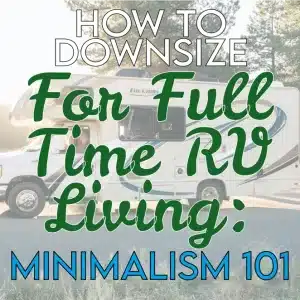 The allure of full-time RV living has captured the hearts of many. It’s a lifestyle that offers freedom, flexibility, and a unique way to experience the world. In recent years, this trend has seen a significant surge, with more people seeking a simpler, less cluttered life on the road.
The allure of full-time RV living has captured the hearts of many. It’s a lifestyle that offers freedom, flexibility, and a unique way to experience the world. In recent years, this trend has seen a significant surge, with more people seeking a simpler, less cluttered life on the road.
Embracing a Nomadic Lifestyle: Full-time RV living is much more than a housing choice; it’s a commitment to a nomadic lifestyle. This way of life allows individuals and families to explore new places, cultures, and experiences, all from the comfort of their mobile home. It’s about breaking free from the conventional, stationary way of life and embracing constant change and adventure.
The Benefits of RV Living: One of the most appealing aspects of RV living , whether you are living in a motorhome, fifth wheel, or a truck bed tent, is the sense of freedom it provides. You’re not tied to a single location, and the world becomes your backyard. This lifestyle also encourages a simpler way of life, focusing on experiences over possessions. Additionally, it can be a cost-effective way of living, eliminating the expenses associated with traditional homeownership or long-term rental agreements.
Community and Connectivity: Contrary to the notion of isolation, the RV community is vibrant and welcoming. RV parks and campgrounds often serve as melting pots of cultures and experiences, offering opportunities for socializing and making new friends. Furthermore, advancements in technology have made it easier than ever to stay connected with loved ones and maintain a digital presence, regardless of where you are.
The Growing Trend: The popularity of RV living has grown exponentially in recent years. This is partly due to the increasing availability of resources and information about this lifestyle. Social media and online communities offer insights, tips, and support for those interested in or currently living this lifestyle. Additionally, the rise of remote work has made it feasible for more people to consider RV living as a viable option.
Sustainability and Minimalism: RV living often goes hand in hand with a minimalist approach. It naturally encourages downsizing and living with fewer material possessions. Many RV enthusiasts also focus on sustainability, adopting practices like solar power usage and waste reduction, making this lifestyle not only adventurous but also environmentally conscious.
In summary, full-time RV living is not just about the places you’ll go; it’s about the experiences you’ll have, the people you’ll meet, and the personal growth that comes with embracing a simpler, more mobile way of life. It represents a significant shift in how one perceives home and comfort, offering a unique blend of freedom, adventure, and simplicity.
In this article, we provide lots of information on how to transition to full time RV living. These RV tips helped us make the move, and they can help you as well.
Understanding Minimalism in the Context of RV Living
Minimalism in RV living isn’t just about owning fewer things. It’s a philosophy that emphasizes the importance of making room for more meaningful experiences and relationships. It’s about mobility and the freedom to explore without the burden of excessive possessions.
More Than Just Less Stuff: At its core, minimalism in the context of RV living is about intentionality. It’s the intentional promotion of the things we most value and the removal of anything that distracts us from it. This lifestyle choice is about focusing on what truly matters – experiences, relationships, and personal growth – rather than material possessions.
The Essence of Mobility and Flexibility: For full-time RV dwellers, minimalism is also a practical necessity. The limited space within an RV means that every item must have a purpose, and often, a dual purpose. This constraint encourages creativity and resourcefulness, leading to innovative solutions for living comfortably in a compact space.
A Path to Freedom: By embracing minimalism, RV dwellers find themselves unshackled from the weight of unnecessary belongings. This lightness translates to greater freedom to move, explore, and change locations with ease. It’s a liberation from the traditional burdens of property maintenance and the accumulation of stuff, allowing for a more spontaneous and adventurous lifestyle.
Simplifying Life, Enriching Experiences: The minimalist approach in RV living is not about deprivation, but about enriching life by stripping it down to its essentials. It’s about making room for more travel, more experiences, and more joy. The focus shifts from what you own to what you do, from quantity to quality.
Mindful Consumption and Sustainability: Minimalism in RV living also promotes mindful consumption. It involves making deliberate choices about what to buy and keep, focusing on sustainability, quality, and necessity. This mindful approach extends to all aspects of life on the road, including energy consumption, waste production, and even the types of experiences chosen.
The Psychological Benefits: Embracing minimalism can also lead to significant psychological benefits. It often results in less stress, as there’s less to clean, maintain, and worry about. There’s a sense of peace that comes with owning less and a heightened appreciation for the belongings that do make the cut. It encourages living in the moment and fosters a deeper connection with nature and the surroundings.
In essence, understanding minimalism in the context of RV living is about grasping the freedom and joy that comes from living a life unencumbered by material excess. It’s about finding richness in experiences and relationships, making every square foot of the RV a space filled with purpose, value, and meaning.
Assessing Your Needs and Wants
The first step in downsizing for RV living is differentiating between what you need and what you can live without. It requires a thorough assessment of your lifestyle and an honest evaluation of what is essential. This process is not just physical but also psychological, as it involves detaching from material possessions.
Evaluating Lifestyle and Priorities: Before transitioning to RV living, it’s crucial to reflect on your current lifestyle and what aspects are essential to maintain. This involves evaluating daily routines, hobbies, work requirements, and personal comforts. Understanding your priorities helps in making informed decisions about what to keep and what to leave behind.
Needs Versus Wants: In a traditional home, it’s easy to accumulate items that we want rather than need. The limited space in an RV forces a re-evaluation of these items. Needs are things essential for survival and basic comfort, like appropriate clothing, kitchen essentials, and necessary technology. Wants, however, are items that enhance life but aren’t crucial, such as decorative items, excessive clothing, and non-essential gadgets.
The Minimalist Mindset: Adopting a minimalist mindset is key in this assessment. It involves recognizing that happiness and fulfillment don’t stem from possessions. By focusing on what truly adds value to your life, you can eliminate excess. This mindset encourages thoughtful consumption and a focus on quality over quantity.
The Challenge of Letting Go: Letting go of possessions can be challenging, especially when they hold sentimental value. It’s important to acknowledge these emotions and find alternative ways to preserve memories, such as digitizing photos or choosing a few treasured keepsakes. The goal is to keep what brings joy and serves a purpose in the RV lifestyle.
Space and Functionality Considerations: In an RV, space is at a premium, and functionality becomes paramount. Items that serve multiple purposes or can be easily stored are ideal. This might mean choosing a foldable dining table that doubles as a work desk or selecting kitchenware that nests together to save space.
Planning for Seasonal and Recreational Needs: When living in an RV, you need to be prepared for various climates and recreational activities. This means carefully selecting clothing and gear that are versatile and suitable for different environments, while avoiding overpacking.
Continuous Reassessment: Finally, assessing needs and wants is an ongoing process. As you adapt to RV living, your needs may change. Regularly re-evaluating your possessions ensures that your RV remains clutter-free and aligned with your current lifestyle and priorities.
In summary, assessing your needs and wants is a critical step in preparing for full-time RV living. It involves a thoughtful and honest examination of your lifestyle, a willingness to embrace minimalism, and a commitment to making choices that support a fulfilling and unencumbered life on the road.
Planning Your RV Space
An RV’s space is limited, making it crucial to plan each square foot wisely. Understanding different RV layouts and determining which one suits your needs is essential. The key is to optimize the available space for both functionality and comfort.
Understanding Different RV Layouts: The first step in planning your RV space is to familiarize yourself with the various types of RVs and their layouts. From compact vans to spacious motorhomes, each type offers different space configurations. Consider factors like the number of occupants, the need for a workspace, and lifestyle preferences when choosing your RV.
Maximizing Space Utilization: Once you have selected your RV, the next step is to maximize its space. This involves strategic planning to make the most of every area. Multi-functional furniture, such as a bed that converts into a sofa or a table that folds down, can be incredibly effective. Creative storage solutions, like under-bed storage, wall-mounted holders, and ceiling racks, can also help keep your space organized and clutter-free.
Designing for Comfort and Efficiency: Comfort in an RV is not just about having enough room; it’s also about creating a space that feels like home. This includes selecting a color scheme, adding personal touches like photographs or artwork, and ensuring good lighting and ventilation. At the same time, efficiency is key. This means arranging the space in a way that allows for easy movement and accessibility to all areas.
Incorporating Technology Smartly: In today’s world, incorporating technology into your RV is almost a necessity, especially if you work remotely. Plan for an efficient workspace with reliable internet access, adequate power supply, and ergonomic furniture. Additionally, consider installing smart devices for entertainment and home automation, like a compact smart TV or a digital assistant.
Planning for the Kitchen and Bathroom: The kitchen and bathroom are two of the most important areas in your RV. In the kitchen, prioritize appliances that are compact and multipurpose. In the bathroom, look for space-saving designs, such as a shower-toilet combo or collapsible sink. Efficient use of these spaces can significantly enhance your RV living experience.
Adapting to Outdoor Living: One of the joys of RV living is the ability to connect with nature. Plan your outdoor space by including items like a foldable table and chairs, an awning for shade, and outdoor cooking gear. This extends your living area and allows you to enjoy the great outdoors comfortably.
Safety and Accessibility Considerations: Safety should always be a priority in your RV planning. This includes installing smoke detectors, carbon monoxide detectors, and fire extinguishers. Also, consider accessibility, especially if you or someone traveling with you has mobility issues. Features like grab bars, step stools, and slide-out sections can make the RV more accessible.
In conclusion, planning your RV space is a crucial step in preparing for a life on the road. It requires careful consideration of your needs, creative use of space, and a focus on comfort and efficiency. By thoughtfully designing each area of your RV, you can create a functional, comfortable, and enjoyable living environment that makes the most of the limited space available.
Decluttering Strategies
Decluttering is a vital step in preparing for RV living. It involves a systematic approach to sorting through your belongings, determining what to keep, and finding ways to dispose of the rest responsibly. Organizational strategies like categorizing items and setting decluttering goals can be immensely helpful.
Developing a Decluttering Plan: The first step in effective decluttering is to develop a clear plan. This plan should include a timeline, goals, and a method for sorting items. You might decide to tackle one room at a time or focus on specific types of items, like clothing, kitchenware, or books.
The Four-Box Method: A practical approach to decluttering is the four-box method, which involves dividing items into four categories: keep, sell/donate, store, and discard. This method forces a decision about each item, making it easier to let go of things you don’t need.
Emphasizing Quality Over Quantity: When deciding what to keep, focus on quality rather than quantity. Choose items that are durable, functional, and bring you joy. This is particularly important in an RV, where space is limited and every item should serve a purpose.
Digitizing to Save Space: Where possible, digitize items to save physical space. This can include scanning documents and photos, converting CDs and DVDs to digital formats, and using e-books instead of physical books. This not only saves space but also makes these items more accessible while on the move.
Selling and Donating Items: For items you decide not to keep, consider selling them or donating them to charity. Selling items can provide extra funds for your RV journey, while donating can give your belongings a new life and help those in need.
Dealing with Sentimental Items: Sentimental items can be the hardest to declutter. If possible, choose a few cherished items to bring with you and find alternative ways to remember others, such as taking photos or keeping a small piece of a larger item.
Regular Reassessment: Decluttering is not a one-time task, especially in an RV. Regularly reassess your belongings to ensure everything you have is still necessary and valued. This ongoing process helps maintain an organized and clutter-free space.
Involving Family Members: If you’re transitioning to RV living with family, involve everyone in the decluttering process. This helps ensure that each person’s needs and preferences are considered and can make the process more efficient and less overwhelming.
In conclusion, effective decluttering is essential for transitioning to full-time RV living. It requires a well-thought-out plan, a willingness to let go of unnecessary items, and a focus on keeping only what is truly important and useful. By following these strategies, you can create a streamlined, organized living space that supports your new, minimalistic lifestyle on the road.
Selecting Multipurpose and Compact Items
In an RV, each item must earn its place. Prioritize items that serve multiple purposes and take up minimal space. Compact, foldable, or collapsible products are especially beneficial in an RV setting.
The Importance of Versatility: In the confined space of an RV, versatility is key. Choose items that can serve more than one function, reducing the need for multiple single-use objects. For example, a dining table that can be converted into a work desk, or a sofa that doubles as a guest bed.
Space-Saving Design Choices: Look for items designed to save space. Foldable or collapsible items, such as chairs, tables, and kitchenware, are ideal. These items can be easily stored when not in use, freeing up valuable space in the RV.
Quality Over Quantity: When selecting multipurpose items, opt for high-quality products that can withstand regular use and the rigors of travel. Investing in durable items may have a higher upfront cost but can save money and space in the long run.
Innovative Storage Solutions: Efficient storage solutions are vital in maximizing space. Use hanging organizers, under-bed storage containers, and wall-mounted systems to keep items organized and accessible. Magnetic strips for knives and spice jars, and over-the-door racks, can also be extremely useful.
Choosing Compact Appliances: In the kitchen, select compact and multipurpose appliances. A combination oven and microwave, a compact refrigerator, and a portable induction cooktop can serve most cooking needs without occupying too much space.
Clothing and Personal Items: For clothing, adopt the capsule wardrobe approach, which involves a limited number of versatile and interchangeable clothing items. Similarly, choose personal items, like toiletries and electronics, that are compact and essential for your daily routine.
Outdoor Gear: If you enjoy outdoor activities, select gear that is compact and easy to store. Collapsible outdoor equipment, like bikes, kayaks, and grills, can enhance your RV experience without taking up too much space.
Tech Gadgets and Entertainment: For technology and entertainment, opt for devices that serve multiple purposes. A tablet can be used for reading, watching movies, and browsing the internet. A compact, portable speaker can provide entertainment both inside and outside the RV.
In summary, selecting multipurpose and compact items is crucial for efficient and comfortable RV living. It involves thoughtful consideration of each item’s utility, space requirements, and durability. By prioritizing versatile and space-saving products, you can create a functional, organized, and enjoyable living space, no matter where your travels take you.
Digitizing Documents and Media
A digital approach not only saves space but also makes accessing these items easier while on the move. Consider scanning important documents and shifting to digital entertainment platforms.
Transition to a Paperless Lifestyle: In the limited space of an RV, reducing paper clutter is essential. Digitizing documents like insurance papers, medical records, and important personal documents can significantly reduce physical storage needs. Use a scanner or a scanning app on your smartphone to convert these documents into digital files.
Organizing Digital Documents: Once documents are digitized, organize them in a systematic way. Use cloud storage services like Google Drive, Dropbox, or OneDrive for easy access and backup. Categorize files into clearly labeled folders and ensure they are secure with strong passwords and encryption, if necessary.
Digitizing Photos and Memorabilia: Photos and memorabilia can take up a lot of space. Digitize these items to preserve memories without the physical bulk. Digital photo frames can display a rotating selection of images, allowing you to keep your memories close without taking up space.
Embracing Digital Media and Entertainment: Shift to digital platforms for your entertainment needs. Use e-readers for books, streaming services for movies and music, and digital subscriptions for magazines and newspapers. This not only saves space but also provides a wide range of entertainment options at your fingertips.
Managing Digital Collections: With an increase in digital media, it’s important to manage these collections effectively. Organize files in a logical manner and regularly back up to avoid data loss. Consider using media management software to keep track of your digital library.
Benefits of Cloud Services: Utilizing cloud services for storing your digital documents and media offers several benefits. It ensures your data is accessible from any device, provides a backup in case of hardware failure, and allows easy sharing with family or friends.
Eco-Friendly and Efficient: Going digital is not only a space-saving measure but also an eco-friendly choice. It reduces the need for paper, minimizes waste, and can be more energy efficient.
Digital Tools for RV Living: In addition to entertainment and document storage, there are numerous digital tools and apps designed to enhance the RV lifestyle. These include navigation apps, campsite finders, and budget trackers that can be invaluable on the road.
In conclusion, digitizing documents and media is a key step in preparing for full-time RV living. It creates a more organized, efficient, and clutter-free environment, making it easier to manage important documents and enjoy entertainment on the go. By embracing the digital age, RV dwellers can enjoy the benefits of a minimalist lifestyle without sacrificing access to information and entertainment.
Clothing and Personal Items
Adopting a capsule wardrobe, which consists of a limited selection of interchangeable clothing, is ideal for RV living. It’s also important to be selective with personal items, keeping only those with significant utility or sentimental value.
Creating a Capsule Wardrobe: A capsule wardrobe is a curated collection of clothing that is versatile, functional, and suits your lifestyle. The key is to select items that can be mixed and matched to create multiple outfits. Focus on quality garments that are durable, easy to care for, and appropriate for various climates and activities you’ll encounter.
Essentials and Versatility: Start with essentials like a good pair of jeans, comfortable walking shoes, and layering items like t-shirts and sweaters. Choose pieces that can be dressed up or down and are suitable for multiple occasions. Remember, the goal is to maximize outfit options with a minimum number of items.
Seasonal Considerations: When living in an RV, you need to be prepared for different weather conditions. Opt for clothing that can be layered and is suitable for various climates. Consider packable jackets and thermal wear for colder environments and lightweight, breathable fabrics for warmer climates.
Personal Items and Toiletries: Space for personal items and toiletries is limited in an RV. Bring only the essentials and prefer multi-purpose products. For example, a shampoo-conditioner combo, multi-purpose soap, and compact grooming tools. Organize these items in compact, travel-sized containers to save space.
Storage Solutions for Clothing: Efficiently storing your clothing is crucial in an RV. Use space-saving techniques such as rolling clothes instead of folding, using vacuum-sealed bags for out-of-season clothing, and utilizing hanging organizers or under-bed storage for extra space.
Accessorizing Smartly: Accessories can add variety to your wardrobe without taking up much space. Choose a few versatile items like a scarf, a belt, or a piece of statement jewelry to enhance your outfits. Remember, a little can go a long way in terms of style.
Laundry Considerations: Plan for laundry needs. Opt for clothing materials that are easy to wash and quick to dry. If your RV doesn’t have laundry facilities, consider the availability of laundromats on your route or portable, compact laundry solutions.
Personal Comfort and Style: While functionality is key, your clothing and personal items should also reflect your personal style and make you feel comfortable and confident. It’s important that your wardrobe and personal items resonate with your identity and lifestyle, even in the limited space of an RV.
In summary, managing clothing and personal items in an RV involves creating a versatile, functional, and compact wardrobe, along with minimal and multipurpose personal items. By carefully selecting and organizing these essentials, you can enjoy comfort, style, and convenience on the road, all while embracing the minimalist ethos of RV living.
Downsizing Kitchen and Household Items
The kitchen and household items in an RV need to be carefully considered due to space limitations. It’s essential to prioritize functionality and space efficiency.
Essential Kitchen Tools for an RV: When it comes to kitchen tools, focus on multipurpose and compact items. A set of nesting bowls, a multi-use pot, and a skillet can handle a variety of cooking tasks. Opt for collapsible items like colanders and measuring cups to save space. Also, a small, versatile cutting board and a good-quality knife set are indispensable.
Streamlining Appliances: In an RV kitchen, appliance selection should be based on utility and size. Consider appliances that serve multiple functions, such as a combination microwave-convection oven or a compact multi-cooker. A small, energy-efficient refrigerator and a two-burner stove are usually sufficient for daily needs.
Dishes and Utensils: Choose durable and space-saving dishes and utensils. Melamine dishes are lightweight and break-resistant, making them ideal for RV living. Opt for a basic set of utensils and stackable cups and mugs. If possible, use items that can serve double duty, like bowls that can be used for both eating and mixing.
Storage Solutions: Make the most of your kitchen storage space by using organizers that maximize vertical space, like stacking shelves and door-mounted racks. Magnetic strips for knives and spice jars can save counter and drawer space. Also, using clear containers for dry goods can help keep items organized and easily visible.
Limiting Household Items: Beyond the kitchen, other household items should also be minimized. Choose a few decorative items to make the space feel homey without cluttering it. Multi-functional furniture, like a storage ottoman or a bed with built-in drawers, can provide extra storage space.
Cleaning Supplies: Select compact and multi-use cleaning supplies. A small vacuum, a foldable broom, and concentrated cleaning products are space-efficient choices. Microfiber cloths are versatile for cleaning and take up less space than traditional towels.
Planning for Meals and Groceries: Meal planning can help minimize the need for excessive kitchen tools and ingredients. Plan meals that require minimal ingredients and kitchenware, and shop for groceries with a focus on fresh produce and multi-use items.
Adapting to Limited Space: Embrace the challenge of a smaller kitchen by exploring creative cooking methods and recipes that are suited for RV living. This can lead to discovering new favorite meals and an appreciation for simpler, more mindful cooking.
In summary, downsizing kitchen and household items for RV living involves careful selection of multipurpose, compact, and efficient items. By streamlining your kitchen and household goods, you can create a functional, organized, and enjoyable cooking and living space that complements the RV lifestyle.
Managing Emotional Challenges
Letting go of possessions can be emotionally challenging. It’s important to acknowledge these feelings and find ways to cope, such as focusing on the positive aspects of RV living and the freedom it brings.
Acknowledging Emotional Attachments: Many of us form emotional attachments to our possessions, viewing them as extensions of our memories and experiences. Recognizing these emotional connections is the first step in managing them. Understand that it’s normal to feel a sense of loss or sadness when parting with certain items.
Coping with Downsizing: Downsizing often involves tough decisions about what to keep and what to let go of. Allow yourself time to process these decisions and understand that it’s a journey, not a one-time event. Be patient with yourself and recognize the progress you’re making towards a more unencumbered lifestyle.
Focusing on the Benefits: Shift your focus to the positive aspects of RV living and minimalism. Concentrate on the freedom, flexibility, and new experiences that this lifestyle will bring. Remind yourself that letting go of physical items makes room for new memories and adventures.
Creating New Memories: Embrace the idea that your experiences and memories are not solely tied to physical objects. You can carry your memories with you in your heart and mind, regardless of where you are. Additionally, document your RV journey through photos, journals, or blogs as a way to create new, meaningful memories.
Preserving Memories Digitally: For items with sentimental value, find digital ways to preserve them. This could include photographing items before letting them go or creating digital scrapbooks. This way, you can keep the memories alive without the physical clutter.
Seeking Support: Don’t hesitate to seek support from friends, family, or online communities of like-minded individuals who are also embracing the RV lifestyle. Sharing your challenges and successes with others can be incredibly comforting and validating.
Embracing Change and New Beginnings: Recognize that embracing RV living is also about embracing change and new beginnings. It’s an opportunity to redefine what’s important in your life and to live in alignment with those values.
Practicing Mindfulness and Gratitude: Engage in mindfulness practices and express gratitude for what you have and the experiences you are able to have. This can shift your perspective from what you are losing to what you are gaining – a life filled with adventure, growth, and freedom.
In conclusion, managing the emotional challenges of downsizing for RV living is a crucial part of the transition. It involves acknowledging and working through emotional attachments, focusing on the positive aspects of your new lifestyle, finding creative ways to preserve memories, and seeking support when needed. By doing so, you can embrace the changes with a positive outlook and fully enjoy the journey ahead.
Financial Considerations and Budgeting
Transitioning to full-time RV living can be cost-effective, but it requires careful budgeting and a clear understanding of the financial implications. Managing expenses wisely is key to a sustainable and enjoyable RV lifestyle.
Initial Investment in an RV: The first significant financial consideration is the purchase of an RV. The cost can vary widely depending on the type, size, and features of the RV. Consider both new and used options, and balance your needs with your budget. Remember to factor in additional costs like insurance, registration, and any necessary upgrades or repairs.
Ongoing Maintenance and Repairs: Owning an RV comes with ongoing maintenance and repair costs. Regular upkeep is crucial to prevent costly repairs down the line. Set aside a budget for routine maintenance, unexpected repairs, and emergency situations.
Fuel Costs and Travel Expenses: Fuel is a major expense in RV living, especially for those who plan to travel frequently. Budget for fluctuating fuel prices and plan your routes efficiently. Additionally, consider other travel expenses like tolls, parking fees, and campground fees.
Campground and Utility Costs: While some RVers prefer boondocking (camping without hookups), others may opt for campgrounds with amenities. Campground fees can vary, and some may include utilities like electricity, water, and sewage. Research and plan your stays to balance cost with comfort.
Living Expenses and Budgeting: Just like in a traditional home, you’ll have living expenses such as groceries, healthcare, internet, and entertainment. Budgeting these expenses requires a realistic assessment of your lifestyle and needs. Take advantage of discounts, memberships, and bulk buying where possible.
Income and Remote Work Considerations: If you’re not retired, consider how you’ll generate income on the road. Remote work, freelance opportunities, and seasonal jobs are popular options among RVers. Ensure you have a reliable internet connection and a suitable workspace in your RV.
Savings and Emergency Fund: It’s advisable to have savings set aside for emergencies. An emergency fund can provide peace of mind and financial security in case of unexpected events or expenses.
Budget Tracking and Adjustment: Keep track of your expenses and regularly review your budget. RV living can have variable costs, and it’s important to adjust your budget as needed based on your actual spending patterns and lifestyle changes.
Understanding Tax Implications: Be aware of any tax implications that might arise from RV living, such as state residency issues and taxes related to remote work. Consulting a tax professional can provide clarity and help you plan accordingly.
In summary, financial considerations and budgeting are critical components of successfully transitioning to and maintaining an RV lifestyle. It involves careful planning, realistic assessment of costs, and ongoing management of finances. By understanding and effectively managing your financial resources, you can enjoy the freedom and adventure of RV living without financial stress.
Personally I can tell you that the hardest part for me was the downsizing. Selling items that had personal attachment and memories was difficult at first. But when you realize that you keep the memories, and that by downsizing and moving into an RV you will make lots more new memories.
If you are considering such a move, take your time and be sure that such a move is right for you. Don’t be afraid to ask for help if needed – there are lots of us who have gone through what you soon will. You will find lots of support.
